Brakes are one of the important safety systems in every vehicle. The car safety has touched every aspect of vehicle design, from the body of the car to the plush interiors and upgraded car safety systems like seat-belts and airbags. With the advancement in the technology varying types of braking systems are in use now.
There are different kinds of braking systems used in commercial vehicles versus a passenger car, and each type of stem requires specific knowledge and training if one wants to have effective use of it.
Braking system failures are one of the leading factors of car accidents around the world, so timely maintenance of the braking system is key to avoid serious accidents on the roads.
In an automobile vehicle, a braking system is arrangements of various linkages and components (brake lines or mechanical linkages, brake drum or brake disc, master cylinder or fulcrums, etc.) that are arranged in such a manner that it converts the vehicle’s kinetic energy to heat energy which in turns or de-accelerate the vehicle. For Brake repair service Auckland Call 09 636 4919, you can visit Sterling Clutch and Brakes who are professional Clutch and brakes repair experts in New Zealand.
The need for Braking System
The braking system in an automobile is needed:-
* To stop the moving vehicle.
* To de-accelerate the moving vehicle.
* For parking vehicle on a flat surface or on the slope.
* To prevent an accident.
* To prevent damage to the vehicle from the road conditions.
Type of Braking Systems
The vehicle moving on the road have various types of braking systems from vintage cars to modern cars. The braking system in vehicles is classified on the basis of various needs and purposes of an automobile vehicle. The following are the main braking systems in the vehicle
- Mechanical brakes
- Hydraulic brakes
- Air Brakes
- Anti-lock brakes (ABS)
Mechanical Brakes : Mechanical brakes are used in Hand brakes( or parking Brakes) In it a lever is provided near the driver seat and through steel wires it is connected to the brakes at rear end of vehicle When the hand brake is applied , tension is created at the brakes and the brake shoe holds the drum from rotating and hence the movement of the vehicle is restricted, even when the same is parked on slightly inclined surface.
Hydraulic Brakes: This type of braking system uses brake fluid to transfer pressure from the brake pedal to the brake pads or shoes. By pressing the brake pedal, brake fluid transfers this pressure to the brake pads. Since the brake fluid is in the closed chamber the pressure applied on the brake pedal is evenly transferred to brake pads in all the wheels. If your car hydraulic brakes need brake pads replacement you can come to Brake pads Auckland at Sterling Clutch and brakes.
Single-circuit Hydraulic brakes
This hydraulic brake system consists of a master cylinder that is fed by a reservoir of hydraulic braking fluid. This is connected by an assortment of meta, pipes and rubber fittings which are attached to the cylinders of the wheels. The wheels contain two opposite pistons which are located on the band or drum brakes which pressure to push the pistons apart forcing the brake pads into the cylinders, thus causing the wheels to stop moving. At Cheap Brake Pads Auckland Call 09 636 4919 , you can replace brake pads of your vehicle without bothering about the high cost of pads replacement with Sterling Clutch & Brakes.
Dual -circuit Hydraulic brakes
Many high-end luxury vehicles are commonly equipped with the dual-circuit hydraulic braking system. Controlled by the onboard computer a signal is sent to the computer unit when the driver presses the brakes, which then calculates the applied force and pumps the corresponding amount of pressure into the hydraulic brakes. The computer fitted in the vehicle calculates the car rate of speed and other factors that may affect the braking.
Air Brake Systems: Air Brakes system is generally used in heavy-duty vehicles like trucks and buses and work the same way as in rail cars. Using the triple-valve principle, air builds up inside the brake pipes or air- lines releases the brakes. Air is filled through with pressure by a compressor in an air tank and when the pedal is pressed pressure decreases in the drum, spreading the brake shoe against the drum. The compressor refills the reservoir tanks and when the pedal is allowed to retract by pulling the foot from it, air pressure increases back to the original state.
Anti-lock Brakes (ABS): All modern vehicles are mostly fitted with Anti-lock Brakes (ABS Braking system). These are not actually brakes, but an advanced technology integrated into the design of modern brake system. Anti-lock brake system or ABS consists of sensors that keep track of the rotational speed of the individual wheels. In the sudden braking, especially on wet or snowy road conditions, there is the tendency of the wheels to lock up and the tires skid because of the loss of contact with the ground secondary to the speed of the wheel. If skidding is detected, the ABS pulses the wheel’s brake pressure rapidly on and off, reducing the rotational speed of the wheels and allowing the tires to re-establish contact on the road.
For getting complete check-up of the brakes, rotors, and Drum brake repair service Auckland visit Sterling Clutch Brakes, or call at 09-636-4919 for any further inquiry regarding clutch and brakes repairs solutions. You can also visit our website https://Sterlingbrake.co.nz/. for latest offerings regarding clutch and brake repair solutions from us.
 NZD
NZD
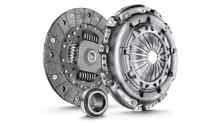
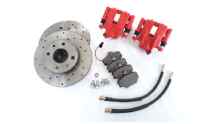
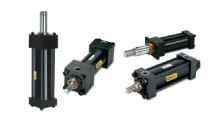
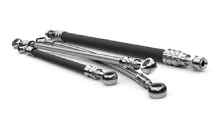
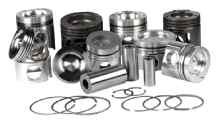
.jpg)
.jpg)
.jpg)
.jpg)

.jpg)
.jpg)


